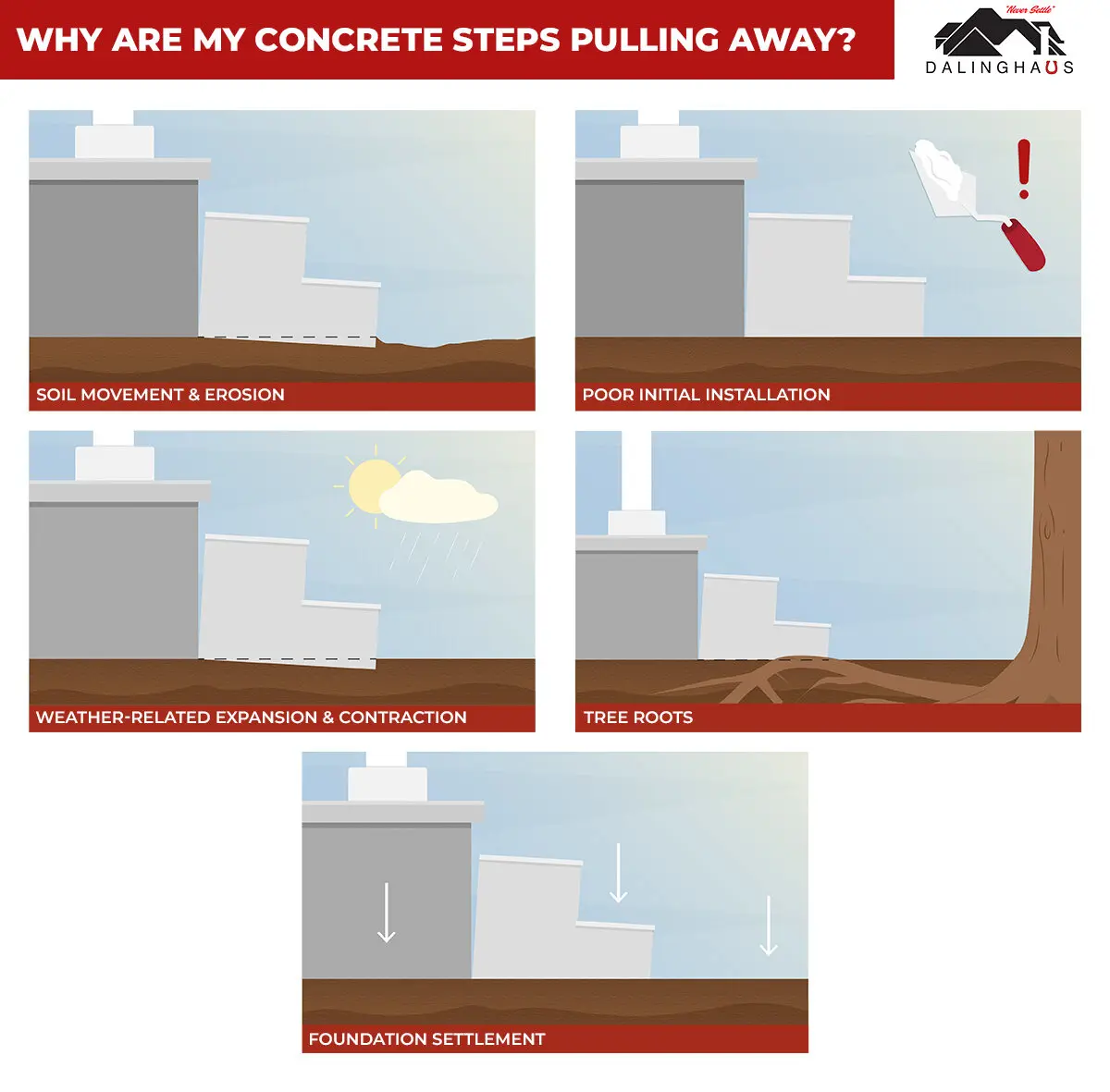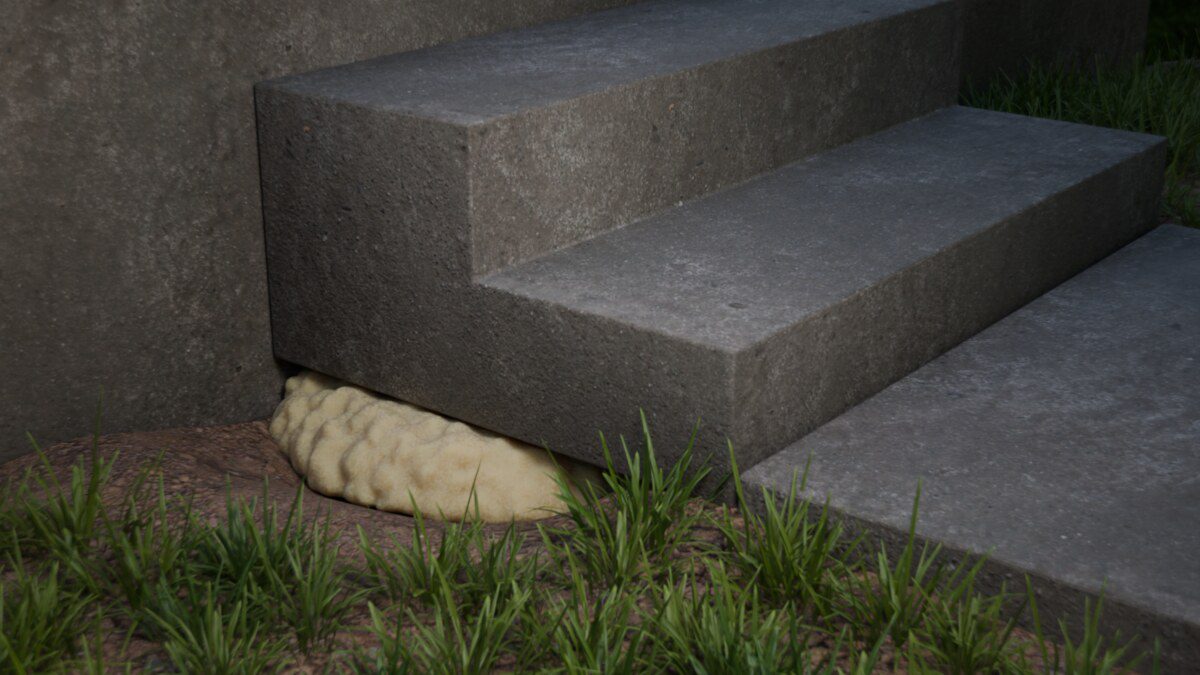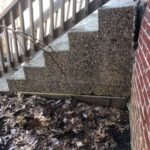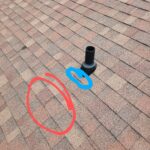Are the concrete steps leading up to your house starting to pull away, creating an unsightly gap and a potential safety hazard? You’re not alone.
This common issue can seem daunting, but with the right approach, you can fix it yourself without breaking the bank. Imagine the satisfaction of restoring your home’s curb appeal and ensuring your family’s safety with just a little bit of effort.
By understanding why this happens and how to address it, you can take control and maintain the beauty and functionality of your home. So, let’s dive in and explore the straightforward steps you can take to repair your concrete steps, keeping them secure and looking great for years to come.
Signs Of Concrete Steps Pulling Away
Cracks between steps and the house may signal steps pulling away. Gaps can cause instability and need fixing. Addressing these issues promptly helps maintain safety and structure.
Concrete steps pulling away from a house is a common issue that many homeowners face. It can lead to safety hazards and structural damage if not addressed promptly. Recognizing the signs early can prevent costly repairs and ensure the safety of your home. You might wonder, “How can I tell if my concrete steps are pulling away?” It’s simpler than you think. Let’s dive into the key indicators that your concrete steps might be detaching from your house.Visible Gaps
One of the most obvious signs is the appearance of gaps between the steps and the house. These gaps can start small but may widen over time, indicating that your steps are shifting. A friend once showed me her house steps where a gap had grown large enough to fit a finger through. This kind of gap is a clear warning sign that action is needed. Have you noticed any similar gaps in your home?Cracks In The Steps
Cracks can be another telltale sign. These may appear on the surface of the steps or along the edges where they meet the house. While minor cracks can occur naturally, growing or widening cracks suggest movement. Picture this: you’re stepping out the door and notice a crack that wasn’t there last season. This is your cue to investigate further. Are your steps showing more cracks over time?Uneven Surfaces
An uneven surface can be more than just an aesthetic issue—it could signal underlying problems. If your steps feel tilted or look uneven, they might be pulling away from their original position. I recall visiting a relative’s home where the steps seemed to tilt to one side, making it awkward to walk down. This imbalance often means the foundation underneath is shifting. Do your steps feel uneven underfoot?Water Pooling
Water pooling can occur when steps shift and create depressions where rainwater collects. If you notice water gathering where it didn’t before, it might be due to your steps pulling away. This was the case with my neighbor’s home, where puddles formed after every rainstorm. Such pooling not only signals movement but can also lead to further erosion. Have you spotted unusual water collection around your steps?Loose Railings
Loose railings can be a safety hazard but also an indicator that your steps are pulling away. As the steps shift, railings may become detached or wobbly. Imagine grabbing a railing for support, only to feel it shake under your grip—alarming, right? This instability is often linked to movement in the concrete steps. Are your railings secure, or do they need attention? Recognizing these signs can help you take action before the problem worsens. Addressing these issues early on ensures the safety and stability of your home. Now that you know what to look for, are your concrete steps showing any of these signs?Causes Of Separation
Concrete steps pulling away from a house can be concerning. Identifying the causes of separation is crucial. This issue can stem from several factors. Below, we explore these common causes. Understanding them helps prevent future damage.
Settling Of Foundation
The foundation of a house may settle over time. Soil beneath can shift or compact. This movement affects attached structures. Concrete steps can detach slightly. Settling is natural but varies with soil type. Loose or sandy soil is more prone to shifting.
Weather Conditions
Weather plays a big role in concrete separation. Extreme temperatures cause expansion and contraction. This movement affects the bond between steps and house. Heavy rain can erode supporting soil. Frost can heave the ground, lifting steps. These changes stress the concrete connection.
Improper Installation
Poor installation practices can lead to separation. Incorrect measurements or alignment affect stability. Weak mortar or adhesive fails over time. Lack of proper anchoring worsens the issue. Skilled installation is key for lasting concrete steps.
Tools And Materials Needed
Essential items include a chisel, wire brush, and hammer for removing debris. Grab concrete adhesive and a trowel to fill gaps. Don’t forget safety goggles and gloves.
To repair concrete steps pulling away from a house, you need specific tools and materials. The right equipment ensures a safe and effective repair process. Having the right items on hand makes the task easier and faster. Below, you will find a detailed list of essential tools and materials necessary for this repair project.Essential Tools
A hammer drill helps create holes for anchors. Use a measuring tape to mark accurate dimensions. A chisel assists in removing loose concrete pieces. A wire brush cleans the surface thoroughly. Safety goggles protect your eyes from debris. A caulking gun helps in applying sealant smoothly. A level ensures steps are even.Materials For Repair
Use concrete repair mix to fill gaps and cracks. Expansion anchors secure the steps to the house. Concrete bonding adhesive strengthens the bond between old and new concrete. Polyurethane sealant seals and waterproofs joints. Sandpaper smoothens rough surfaces. Dust mask protects from inhaling dust particles. With these tools and materials, you are ready to fix the steps.
Credit: www.dalinghausconstruction.com
Safety Precautions
Ensure safety by wearing protective gear like gloves and goggles. Maintain a clear work area to prevent accidents. Use stable ladders or scaffolding when working on elevated surfaces.
Repairing concrete steps that are pulling away from your house can be a challenging task. Ensuring safety throughout the process is crucial. These safety precautions will help you avoid accidents and complete the job effectively. Before you dive into the repair work, consider how much protective gear and safe handling of materials can make a difference.Protective Gear
Wearing the right protective gear is your first line of defense. Safety goggles protect your eyes from dust and debris that can cause irritation or injury. A dust mask helps you avoid inhaling harmful particles, especially when cutting or grinding concrete. Sturdy gloves safeguard your hands from sharp edges and rough surfaces. Have you thought about what might happen if you don’t wear a hard hat? Falling debris or tools could lead to serious head injuries. Steel-toed boots provide foot protection, offering extra safety in case a heavy object falls. Wearing this gear might feel cumbersome, but it’s a small price to pay for your well-being.Safe Handling Of Materials
Handling materials safely is just as important as wearing protective gear. Concrete mix can be heavy and awkward to lift. Always lift with your legs, not your back, to avoid injury. Consider using a wheelbarrow to transport materials, reducing strain on your body. Think about how you store your tools and materials. Keeping them organized can prevent tripping hazards. When working with chemicals like bonding agents or sealers, ensure you are in a well-ventilated area. This precaution prevents inhalation of fumes, which can be harmful. Have you checked the weather forecast? Moisture can make surfaces slippery, increasing the risk of falls. Plan your repair on a dry day to keep conditions safer. By taking these precautions, you not only protect yourself but ensure a smoother repair process. Following these safety steps doesn’t just protect you physically. It also boosts your confidence as you tackle your home improvement projects. What measures will you take to ensure your safety next time you embark on such tasks?Preparing The Site
Start by clearing debris and cleaning the area around the concrete steps. Ensure the surface is dry for a strong repair bond. Remove any loose concrete pieces and inspect for further damage.
Preparing your site is crucial when tackling the challenge of repairing concrete steps pulling away from your house. A well-prepared site ensures that your repair job is not just a temporary fix but a long-lasting solution. It also sets the foundation for a smoother and more efficient repair process.Clearing The Area
Start by examining the surroundings of your concrete steps. Move away any potted plants, garden furniture, or decorative items. This opens up your workspace and prevents accidental damage to your belongings. Consider the tools you’ll need. Gather them and keep them within reach. Nothing disrupts your workflow like having to search for a tool halfway through the process. Safety gear is a must. Wear gloves, goggles, and a dust mask. These protect you from dust, debris, and potential chemical exposure.Cleaning The Steps
Cleaning the steps is a vital step you shouldn’t skip. Dirt, grime, and loose particles can interfere with the repair material’s adhesion. Use a stiff brush to scrub the surface. For stubborn stains, a pressure washer can be effective. It removes embedded dirt and cleans cracks thoroughly. Just be careful not to damage the concrete further. You might notice small plants or moss growing in the cracks. Remove them completely. This prevents regrowth and ensures a cleaner surface for repair. Have you ever found that a repair job failed because the surface wasn’t clean enough? Preparing your site properly can prevent such disappointments. Are you ready to tackle the repair with confidence?
Credit: www.gothrasher.com
Repair Techniques
Concrete steps pulling away from a house can be a serious problem. Addressing it early ensures safety and prevents further damage. Different repair techniques suit different gap sizes. Understanding these techniques can guide you in fixing your steps effectively.
Filling Small Gaps
Small gaps between your concrete steps and house can be fixed easily. First, clean the gap thoroughly. Remove any dirt or loose debris. Use a stiff brush for this task. Next, fill the gap with a concrete sealant. Choose a sealant made for outdoor use. Apply the sealant smoothly using a caulking gun. Ensure the sealant fills the entire gap. Let it dry completely before using the steps. This simple fix can stabilize the steps.
Fixing Large Separations
Larger separations require more work and materials. Begin by cleaning the area. Remove any debris with a wire brush. You may need to use a chisel if there are loose pieces. After cleaning, prepare a concrete mix. Follow the instructions on the package. Fill the separation with the concrete mix. Use a trowel to smooth the surface. Allow the concrete to cure fully. This process may take several days. Consider adding support under the steps. This can prevent future separation.
Sealing And Finishing
Repairing concrete steps pulling away from a house involves sealing and finishing techniques to ensure durability. Use a high-quality sealant to prevent moisture penetration. Apply a smooth finish to enhance appearance and protect against environmental damage.
Sealing and Finishing After you’ve successfully repositioned your concrete steps back against your house, the next critical stage is sealing and finishing. This step ensures that your hard work lasts longer and protects against future separation or damage. A well-sealed step not only enhances durability but also gives your home a polished look.Choosing The Right Sealant
Selecting the right sealant is crucial. You want a product that offers both flexibility and durability. Look for polyurethane or silicone-based sealants as they are known for their excellent adhesion and resistance to weathering. Do you live in an area with heavy rainfall? Opt for a waterproof sealant to prevent water seepage. Always check the label to ensure it’s suitable for exterior use.Application Process
Before you start, make sure your steps are clean and dry. Dirt or moisture can hinder the sealant’s effectiveness. Apply the sealant using a caulking gun for precision. Move steadily along the joint, ensuring an even application. Once applied, smooth it out with a putty knife or your finger to ensure a tight bond. Allow the sealant to cure according to the manufacturer’s instructions. This is crucial for achieving the best results. Have you ever rushed a project only to regret it later? Patience here pays off. Taking these steps will help maintain the integrity of your concrete steps and enhance the aesthetic appeal of your home. So, are you ready to tackle those steps and give your house that seamless finish it deserves?Preventive Measures
Inspect concrete steps regularly to spot early signs of pulling away. Clean debris and apply sealant to prevent moisture damage. Reinforce the base with steel brackets for added stability.
Concrete steps pulling away from a house can be a major concern, not just for the safety risks but also for the structural integrity of your home. Preventive measures are key to avoiding such issues. They not only save you from costly repairs but also ensure the longevity of your property. Let’s dive into how regular maintenance and inspections can help you maintain your concrete steps, keeping them securely in place.Regular Maintenance
Regular maintenance of your concrete steps is crucial. It’s much like caring for your car or garden—you need to address issues before they become bigger problems. Start by cleaning your steps regularly. Remove dirt, debris, and any growth like moss or weeds. These can cause moisture retention, which might lead to erosion or cracking. Seal your steps every few years. This creates a protective barrier against water and weathering. If you notice small cracks, fill them immediately. This prevents them from expanding into larger fractures.Inspection Tips
Inspections are your early warning system. They help catch potential problems before they escalate. But how do you know what to look for? Check for visible cracks or gaps. These might indicate the steps are shifting. Look at the connection point between your steps and the house—any separation is a red flag. Use a level to ensure your steps are not tilting. Even slight angles can worsen over time. If you notice unevenness, it might be time to consult a professional. Ask yourself: What signs would indicate future trouble? By staying vigilant, you can nip issues in the bud. Regular inspection empowers you to act decisively and avoid costly repairs. How do you plan to keep your concrete steps in perfect condition?
Credit: www.dalinghausconstruction.com
Frequently Asked Questions
What Causes Concrete Steps To Pull Away?
Shifting soil or foundation issues can cause steps to separate from the house. Weather and poor construction may also contribute.
How Can I Fix Concrete Steps Pulling Away?
Use a concrete adhesive to repair cracks. Fill gaps with a patching compound. Consult a professional for large separations.
Can I Prevent Concrete Steps From Pulling Away?
Ensure proper drainage around steps to prevent water damage. Regularly inspect for cracks and address them promptly.
Should I Hire A Professional For Concrete Repair?
For significant damage or structural concerns, hiring a professional ensures safety and longevity of repairs.
What Tools Are Needed To Repair Concrete Steps?
Basic tools include a chisel, hammer, and trowel. You’ll also need concrete adhesive and patching compound.
Conclusion
Repairing concrete steps pulling away isn’t difficult. Follow the steps shared above. Ensure safety and accuracy while working. Regular inspection prevents future damage. Use quality materials for long-lasting results. Keep tools handy for efficient repairs. Concrete steps enhance home safety and appearance.
Caring for them saves money in the long run. It’s a satisfying task improving your home’s structure. Share your success with friends and family. Encourage others to maintain their concrete steps too. A little effort goes a long way. Happy repairing!





